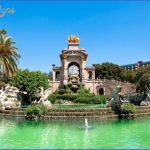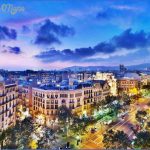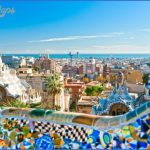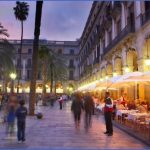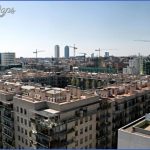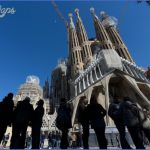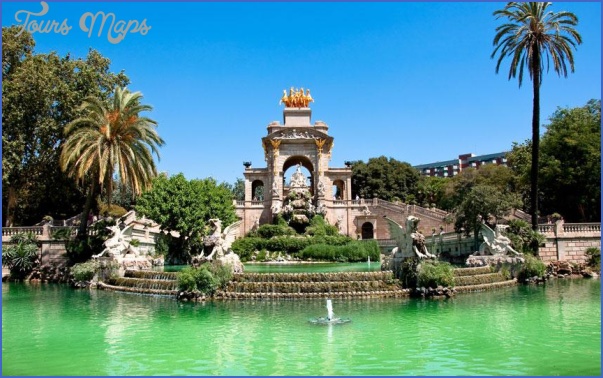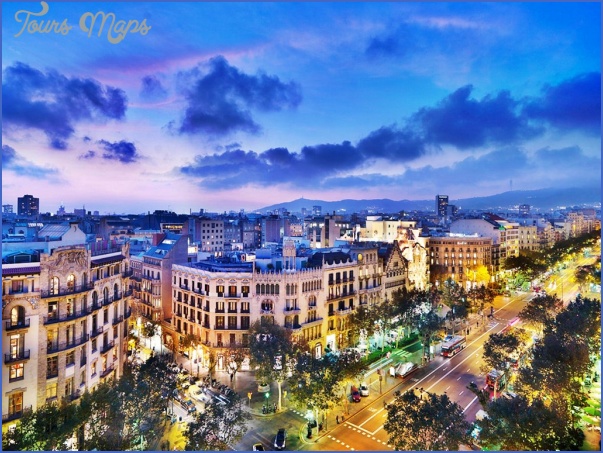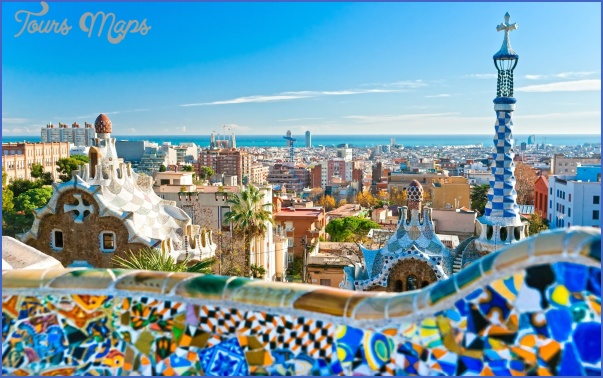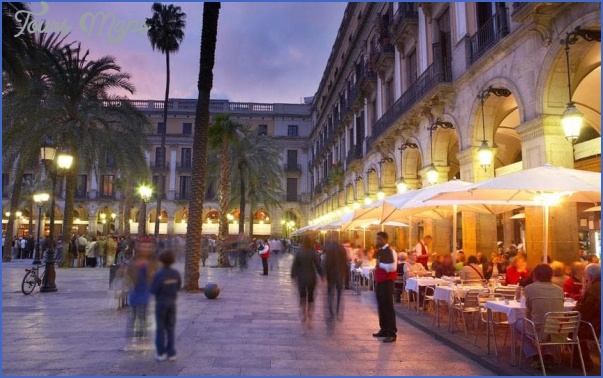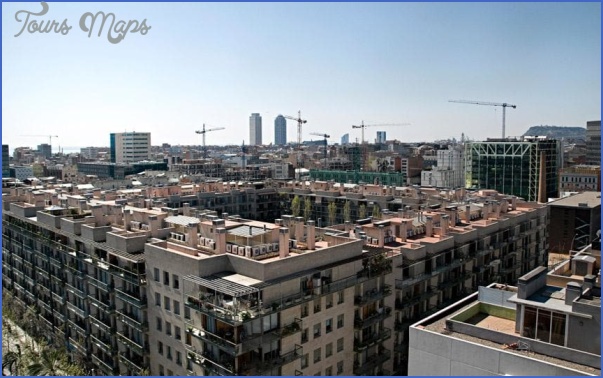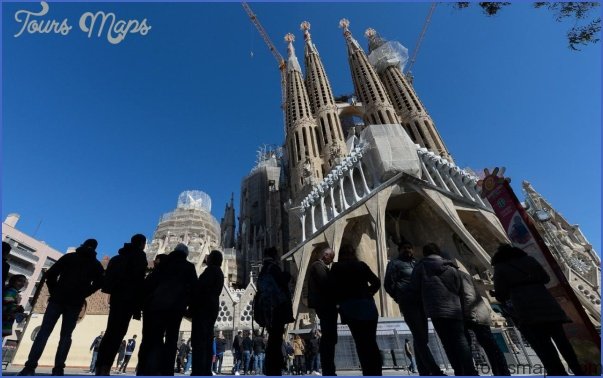CAFE DE L’OPERA. Enjoy a cup of coffee at the famous cafe (see 924). But don’t expect to order to go; Europeans like to enjoy their coffee by sipping it leisurely.
MUSEU DE CERA. Peruse over 300 different wax recreations of famous politicians, celebrities, fictional characters, and European royalty. While many of the figures are difficult to recognize, the scenes of death in the horror room are straightforward enough to appreciate (see 928).
MONUMENT A COLOM. End your tour with a visit to the 60m statue of the man Spanish cities love to claim as their own, Christopher Columbus. Sevilla purports that he is buried in their city (he’s not). Barcelona claims that he was born in Catalunya (he wasn’t). Christopher Columbus may have been elusive in birth and death, but at least Barcelona has captured the prophet in a moment of inspiration, pointing valiantly, heroically, epically… the wrong way. You can take an elevator to the top of the statue for a stunning view of the city (see 928).
MONUMENT A COLOM. Ruis i Taulet’s Monument a Colom towers at the port end of Las Ramblas. Nineteenth-century Renaixenga enthusiasts convinced themselves that Columbus was Catalan, from a town near Girona. The fact that Columbus points proudly toward Libya, not the Americas, doesn’t help the claim; historians agree that Columbus was from Italy. Take the elevator to the top to enjoy a stunning view. (PortaI de la Pau. M: Drassanes. Elevator open daily June-Sept. 9am-8:30pm; Oct.-Mar. M-F 10am-l:30pm and 3:30-6:30pm, Sa-Su 10am-6:30pm; Apr.-May M-F 10am-2pm and 3:30-7:30pm, Sa-Su 10am-7:30pm. ‚1.80, children and over-65 ‚1.20.)
LA BOQUERIA (MERCAT DE SANT JOSEP). Besides being one of the cheapest and best places to get food in the city, La Boqueria is a sight in itself: A traditional Catalan market located in a giant, all-steel Modernist structure. Specialized vendors sell delicious produce, fish, and meat from one of a seemingly infinite number of independent stands inside. (Las Ramblas 95. M: Liceu. Open M-Sa 8am-8pm.)
MUSEU DE L’EROTICA. As Spain’s only erotica museum, the exhibits attract many of Barcelona’s most intrepid tourists. The random assortment spans human history (somewhat unevenly) and depicts a variety of seemingly impossible sexual acrobatics that push the limits of human flexibility. The seven-foot wooden phallus is an irresistible photo op. (Las Ramblas 96. M: Catalunya, Ll3. 933 18 98 65. Open June-Sept. lOam-midnight; Oct-May llam-9pm. ‚7.50, students ‚6.50.)
PALAU DE LA VIRREINA. Once the residence of a Peruvian viceroy, this 18th-century palace houses temporary photography, music, and graphics exhibits. Also on display are the latest incarnations of the 10-15 foot tall dolls which have taken part in the city’s Carnival celebrations since 1399. Be sure to check out the famous rainbow stained-glass facade of the Casa Beethoven next door at Las Ramblas 97, now a well-stocked music store. (Las Ramblas 99. M: Liceu. s-933 16 10 00. Open Tu-Sa 11am-8:30pm, Su llam-3pm. Free.)
MUSEU DE CERA (WAX MUSEUM). Some 300 wax figures form an endless parade of celebrities, fictional characters, and European historical figures; the most recognizable are generally ones with distinctive facial hair, like Fidel Castro, and Chewbacca from Star Wars. (Las Ramblas 4. M: Drassanes. s933 17 26 49. Open July-Sept. daily 10am-8pm; Oct.-June M-F 10am-l:30pm and 4-7:30pm, Sa-Su and holidays llam-2pm and4:308:30pm. ‚6.70, ages 5-11 ‚3.80.)
While the ancient cathedrals and palaces gives the impression that this neighborhood’s time has passed, the area is still very much alive, as evident in the ever-crowded streets. As the oldest part of Barcelona, the Barri Gotic came into existence well before the inception of the grid layout (found in l’Eixam-ple), which took form during Roman times and continued to develop during the medieval period.
ESGLESIA CATEDRAL DE LA SANTA CREU. This cathedral is one of Barcelona’s most popular monuments. Beyond the choir are the altar with the bronze cross designed by Frederic Mares in 1976 and the sunken Crypt of Santa Eulalia, one of Barcelona’s patron saints. The cathedral museum holds Bartolome Bermejo’s Pieta. Catch a performance of the sardana in front of the cathedral on Sunday after Mass. (M: Jaume I. In PI. Seu, up C. Bisbe from PI. St. Jaume. Cathedral open daily 8am-1:30pm and 4-7:30pm. Cloister open 9am-l:15pm and 47pm. Elevator to the roof open M-Sa 10:30am-12:30pm and 4:30-6pm. ‚1.40. Mass Su noon and 6:30pm. Choir area open M-F 9am-lpm and 4-7pm, Sa-Su 9am-lpm. ‚1. English audioguide ‚1.)
PLAQA DE SANT JAUME. Plaga de Sant Jaume has been Barcelona’s political center since Roman times. Two of Cataluna’s most important buildings have dominated the square since 1823: The Palau de la Generalitat, the headquarters of Cataluna’s government, and the Ajuntament, the city hall. (Generalitat open 2nd and 4th Su of every month 10:30am-l:30pm. Closed Aug. Mandatory tours in Catalan, Spanish, or English every 30min. starting at 10:30am. Free. Ajuntament open Su 10am-l:45pm. Free.)
MUSEU D’HISTORIA DE LA CIUTAT. There are two components to the Museu d’Historia de la Ciutat (Museum of the History of Barcelona): The Palau Reial Major and the subterranean excavations of the Roman city Barcino. Built on top of the fourth-century city walls, the Palau Reial Major served as the residence of the Catalan-Aragonese monarchs. When restoration of the building began, the Salo de Tinell (Throne Room) was discovered wholly intact under a Baroque chapel. The huge Gothic room is believed to be the place where Ferdinand and Isabella received Columbus after his journey to America. Today, it houses year-long temporary exhibitions. The second part of the museum lies underground; this 4000 sq. meter iiiarcheological exhibit was excavated from 1930 to 1960 and displays incredibly intact first- to 6th-century remains of the Roman city of Barcino. (PI. del Rei. M: Jaume I. s933 15 11 11. Open June-Sept. Su 10am-3pm, Tu-Sa 10am-8pm; 0ct.-MaySu 10am-3pm, Tu-Sa 10am-2pm and 4-8pm. Museum ‚4, students ‚2.50. Exhibition ‚3.50, students ‚2. Combined museum and exhibition ‚6, students ‚4. Pamphlets available in English.)
EL CALL (JEWISH QUARTER). Although today there is little indicating the Jewish heritage of this area, for centuries El Call was the most vibrant center of intellectual and financial activity in all of Barcelona. One Jewish synagogue was turned into a church, the Esglesia de Sant Jaume (C. Ferran 28). However, the only remaining tangible evidence of Jewish inhabitants in El Call is the ancient Hebrew plaque in tiny C. Marlet. (M: Liceu.)
SANTA MARIA DEL PI. The Esglesia de Santa Maria del Pi is a small 14th-century church with exquisite Gothic stained-glass windows. (M: Liceu. Open M-F 8:30am-lpm and 4:30-8:30pm, Sa 8:30am-lpm and 4-9pm, Su 9am-2pm and 5-9pm. Free.)
PLAQA REIAL. This is the most crowded, happening plaga in the entire Barri Gotic, where tourists and locals congregate to eat and drink at night, and to buy and sell at the Sunday morning flea market. Francesc Daniel Milona designed the plaga, replacing decrepit Barri Gotic streets with this large, architecturally cohesive plaga in the 1850s. Near the fountain in the center of the square there are two street lamps designed by Antoni Gaudf. (M: Liceu or Drassanes.)
Barcelona Travel Destinations Photo Gallery
Maybe You Like Them Too
- Explore Góra Kalwaria, Poland with this detailed map
- Explore Gumdag, Turkmenistan with this detailed map
- Explore Telfes im Stubai, Austria with this detailed map
- Explore Langenselbold, Germany with this detailed map
- Explore Krotoszyn, Poland with this detailed map

